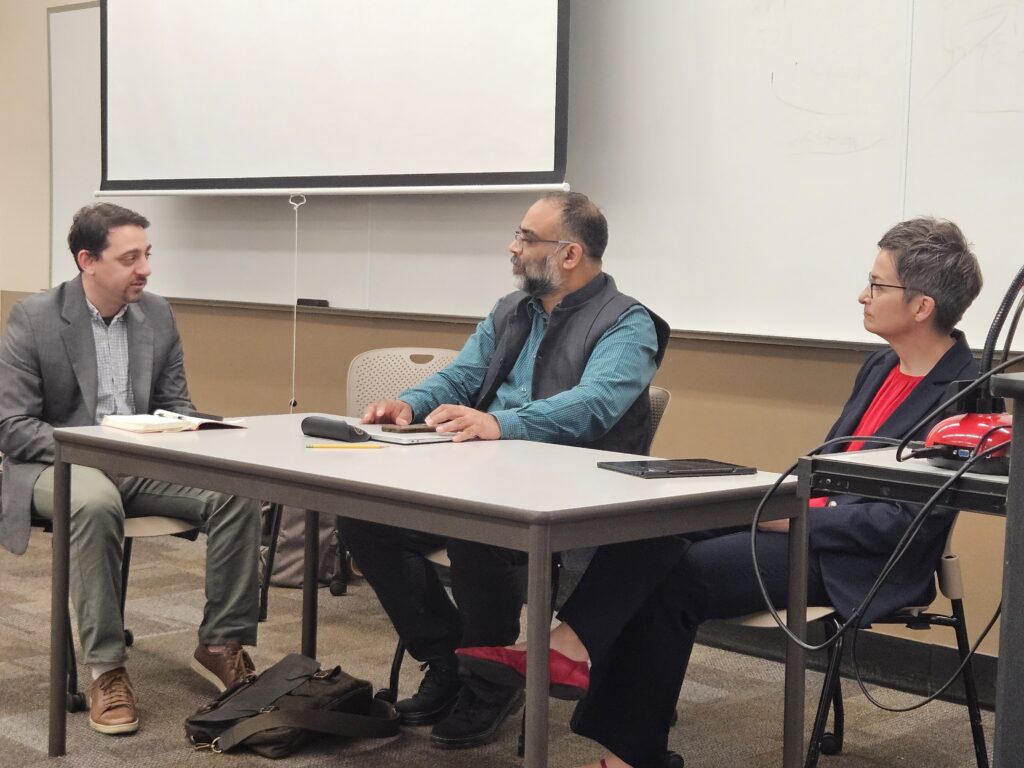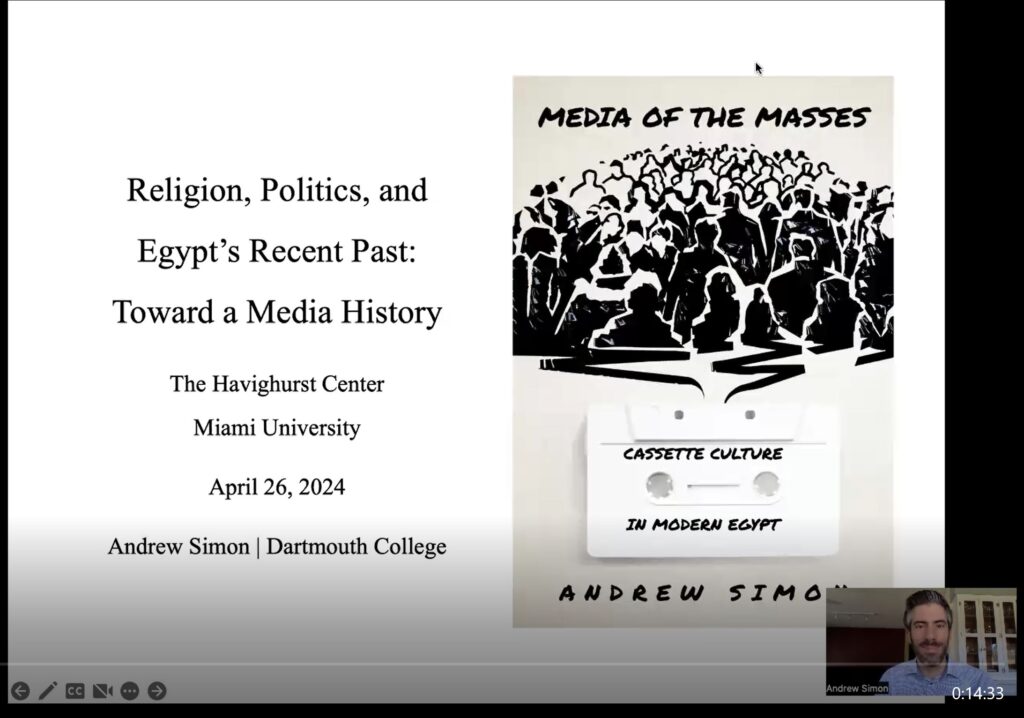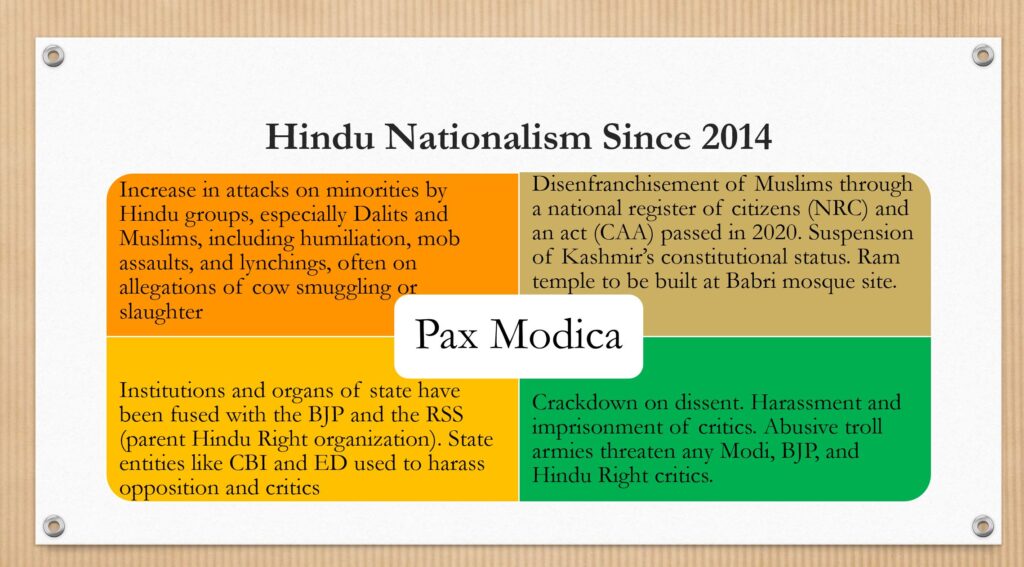By Theo DeRosa
On Friday, April 26, the journalism symposium on the topic of “Media and the Rise of Religious Nationalism Around the World” compared the cases of religious nationalism in Egypt, Russia, and India. The three speakers demonstrated how this phenomenon is growing across regions and cultures and in different historical contexts while also illustrating how different political and cultural trends give rise to movements that could be considered examples of religious nationalism.
Co-sponsored by the Havighurst Center for Russian and Post-Soviet Studies and the Diane Stark Lecture Series in Journalism and coordinated by Jacob Lassin, a former Teaching Fellow at the Havighurst Center, the symposium highlighted the impact of media in the rise of contemporary nationalist movements and how they have even reached an international audience.
The panel consisted of three presentations. Andrew Simon, Senior Lecturer at Dartmouth College, spoke on “Religion, Politics, and Egypt’s Recent Past.” Simon highlighted recent intrusions of Islam into Egyptian Parliamentary debates as well as the role cassette tapes have played in both spreading ideas about religious nationalism and challenging state-controlled media.
Kristina Stoeckl, Professor of Sociology at LUISS Guido Carli University in Rome, spoke on the rise of religious nationalism in Russia, which was particularly relevant in the context of the war in Ukraine. She identified three forms that nationalism tends to take in Russia, and noted that in some ways, these work together and do not have to be mutually exclusive. Stoeckl also made the point that Russian nationalism is somewhat unique in that it is an imperialist ideology. Quite often, nationalism is contrasted with imperialism and the nation is widely understood to be the antithesis of empire. However, as Stoeckl explained, the Russian case is different. All three forms of Russian nationalism that she identified also function as imperialist ideologies because their premise of the Russian nation requires the subjugation of other people.
The first example of nationalism in Russia that Stoeckl mentioned is a religious form of nationalism based on the idea of “Holy Rus’”. This nationalist ideology sees Russia as having developed from the older civilization of Rus’ and Eastern Orthodox Christianity is a core tenet of this identity. This form of nationalism, however, can be used to try to justify their expansion beyond Russia, because Ukraine and Belarus can also be said to have a shared point of historical and religious origin. Through this, Russia tries to position itself as a defender of their faith, even across national borders.
Stoeckl’s second example was ethno-linguistic nationalism. This form of nationalism encompasses Russian speakers on a broad scale. Ethno-linguistic Russian nationalism becomes imperialist in nature because there is a large population of Russian speakers as well as ethnic Russians living outside of the borders of present-day Russia, including Ukraine and Belarus.
The third form of Russian nationalism is based on the concept of “traditional values [традиционные ценности],” a phrase that Russian religious nationalists have adopted from the American Christian right. This adoption is compatible with the emphasis on Orthodox Christianity in the first form, but it is not exclusively Christian and can encompass other religious traditions. Russia contains several faiths and an appeal to Orthodoxy does not extend far beyond the Christian faith, so an emphasis on traditional values, often seen as socially conservative, can unite various traditions behind the common goal of ensuring that Russia acts as a defender of traditional values against the modernist ideas of the West.
The final presentation featured Rohit Chopra, Professor of Communication at Santa Clara University, on Hindu nationalism and media in the Modi era. The panel took place after Indian elections had begun with Prime Minister Narendra Modi widely expected to win another term. Chopra explained how Modi has fused Hinduism with a religious and culturalist national project that aims to transform Indian society in radical ways. As Chopra noted, Modi and his party have captured mainstream media, exploiting it to advance their political agenda.
After the three presentations, participants and audience members engaged in a lively discussion. One particularly interesting comparative point made was that these movements define themselves by their opposition to a perceived enemy that they view as a threat to the values of their religious and national traditions and how they see those two as inherently intertwined. Overall, the case of Russia’s nationalist ideologies seems unique. There is also a case to be made that some of those attitudes are rooted in a Russian tradition of similar ideologies. One thing that was made clear was that to understand foreign political conflicts in the present day, it is important to see how religion is shaping the ideologies that justify these approaches.
Theo DeRosa graduated in May 2024 with a B.A. in Russian, East European, and Eurasian Studies




